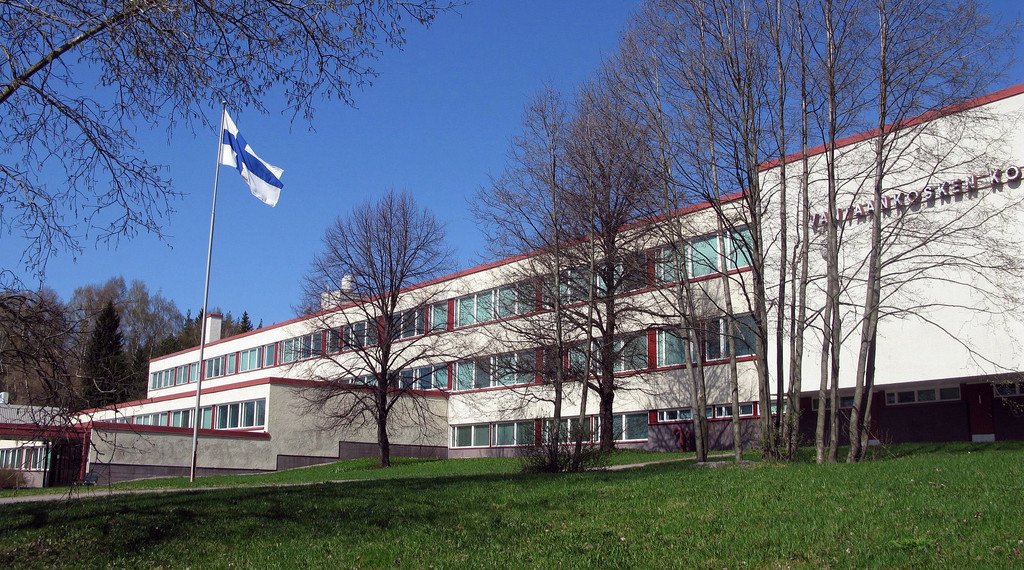For years, Finland’s education system has sparked panic and envy throughout the world. Ever since the results of the first Program for International Assessment (PISA) tests were published by the OECD in 2000, Finland has consistently been in the limelight for its exceptional education system. Though its test scores have dropped slightly since the early days of the test, Finland’s education system is still scoring exceptionally well. Equally notable is its unique form, controversial abroad, but almost universally accepted in Finland.

The result of a gradual reform process that began in the ‘70s, Finland’s contemporary school system can pride itself on not only producing some of the highest scorers on the PISA test, but also on achieving remarkable matriculation levels: 93 percent of students complete high school on time. Furthermore, the quality of education is uniform across regions, and the disparity between the worst and the best performers is one of the lowest in the OECD countries. Given that these positive results follow fairly recent changes to a formerly mediocre educational system, other countries with a thirst for reform are taking note. Finland’s educators have experienced a deluge of foreign journalists and politicians eager to learn from their successes and import them to their own countries. In fact, though they initially enjoyed the attention, Finnish educators have recently grown weary of it — the amount of foreign observers is actually disrupting their work.
Though the education system is largely apolitical in Finland, foreigners are retroactively politicizing it. The analysis of Finland’s education system has taken on deeply partisan colors abroad. Instead of learning from the Finns, there has been a scramble to discredit their education system as a model for other countries because of Finland’s small and relatively homogenous population. However, the ‘90s and a wave of immigration seem to have had no adverse effect on Finland’s scores over time. Furthermore, otherwise similar countries with different education systems, like Norway and Sweden, consistently score lower on international tests. More recently, some journalists have seen the lower scores in 2012 as a sign of the end of an era of Finnish domination. However, Finland still outranks every other European nation and the United States in reading and science.
One of the many important takeaways from Finland’s education reform is that it was instigated as a direct response to economic hardship. Education got first priority when it came to rebuilding the country’s economy. The fact that Finland’s economy is thriving today is, according to some, the direct result of a superior school system. The education system emphasizes vocational education, and as a result avoids leaving behind those with less enthusiasm for academics. Higher productivity is an obvious though often underappreciated result of a good education system that legislators in the United States should keep in mind when investing in education.
The United States’ No Child Left Behind Act, a bipartisan bill signed in 2001 by President George W. Bush, focused on disadvantaged students in public schools. The Act has largely failed to raise the quality of public education in the United States, and the country’s PISA-scores have remained roughly the same since the beginning of the 2000s. Since the signing of the Act in 2001, the political scene has grown fractured — a bipartisan education bill is almost unthinkable today. Randi Weingarten, the president of the largest US Teacher’s Union, released a statement in response to the PISA results, which underlines some of Act’s perceived problem-areas: “Today’s PISA results drive home what has become abundantly clear: While the intentions may have been good, a decade of top-down, test-based schooling created by No Child Left Behind and Race to the Top — focused on hyper-testing students, sanctioning teachers and closing schools — has failed to improve the quality of American public education,” she said. “Sadly, our nation has ignored the lessons from the high-performing nations.”
On the other hand, her organization also released a video that warned against the tabloid interpretations of the rankings. It argued that the rankings should not be used to favor “for-profit education, high-stakes testing, merit pay, weaken[ing] teacher voice[s], closing of neighborhood schools or pink slip teachers.” Considering that the teachers’ unions are amongst the most generous contributors to Democratic campaigns, it is easy to see how the PISA tests could quickly become partisan fodder.
Given this context, the lessons learned from Finland’s education system understandably seem to confuse U.S. commentators. The system is difficult to fit squarely within either U.S. political camp. In the United States, differentiated pay for better teachers and more frequent testing can be seen as a typically Republican approach to education reform. More recently, voucher programs have become the focus of much GOP debate, embraced by Mitt Romney in the 2012 elections.
The Democrats, on the other hand, typically focus on increased teacher support; their official position is that “The Obama administration is working to overhaul the “No Child Left Behind” program and provide teachers with more professional support and resources — while also holding them accountable.” Interestingly, Finland provides a kind of synthesis of these two approaches, and offers a solution where no child is left behind.
In Finland, though the system is based on equality — which to some screams Scandinavian socialism — this equality is largely seen as an equality of opportunity; kids should have the same starting point, and disadvantaged kids should receive special attention. This seems a political goal both sides of the political spectrum in the United States could get behind — equality of opportunity is after all one of the most deeply American ideals around. However, many liberals have latched on to the Finnish model, and their approval has triggered the inevitable disapproval of many right-leaning Americans.
What explains the success of the Finnish model? On one hand, it focuses on excellence in teaching and provides financial incentives to attract the best talent to the teaching profession. Teachers are required to have at least a master’s degree, and only one in ten percent of the applicants to the country’s eight master’s programs in education are accepted. Perhaps this is why the role of the teacher in the Finnish national imagination is the same as it used to be in the rest of the Western world until recently — being a teacher in Finland is a title as respectable as that of a lawyer or a doctor. Though starting salaries are lower for new teachers in Finland than in many other countries, high school teachers with 15 years of experience make 102 percent of what their fellow university graduates do. This means that they earn the same as other people with master’s degrees in other professions. In the United States, by contrast, they earn just 65 percent of their similarly educated peers. This incentives model has naturally been welcomed by more conservative thought. Being a teacher is not a sacrifice reserved for idealists in Finland, as it is sometimes seen in the rest of the Western world.On the other hand, the essential approach of the Finnish education system also entails decentralization and less testing. This means that there is only one national standardized test at age 16 in addition to exams to determine university admissions. Other than that, the teachers are pretty much left to their own devices — the national core curriculum plans are very loosely defined. The mantra seems to be to educate the teachers and then leave them alone. They are considered equipped to handle situations that may arise in the classroom and to keep the individual student in mind. This approach does not have much appeal in a country such as the United States — even across the political spectrum — as measurability is considered key.
Educational excellence does not happen overnight — the development of good educators and educational systems takes time. Ironically, another takeaway from the Finnish reform is not to reform immediately, before the results of the last reforms are evident. The problem this poses is that the effects of a successful reform may take 30 to 40 years to materialize. Consistency, however, is very important. The Finns chose a reform and stuck to it.
Finland’s education system underlines the unproductive partisan fractures that exist in the U.S. debate for education reform. However, it also highlights that equality of opportunity finds its first home in public schools. If we fail to reform our public schools successfully, the American project may be doomed to fail in the not-so-distant future by creating and perpetuating poverty and inequality. The low poverty levels in Finland can perhaps be linked to the success of its education system. As one American educator put it, “One wonders what we might accomplish as a nation if we could finally set aside what appears to be our de facto commitment to inequality, so profoundly at odds with our rhetoric of equity, and put the millions of dollars spent continually arguing and litigating into building a high-quality education system for all children.”
